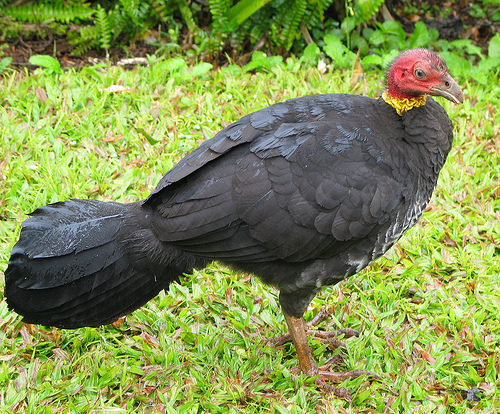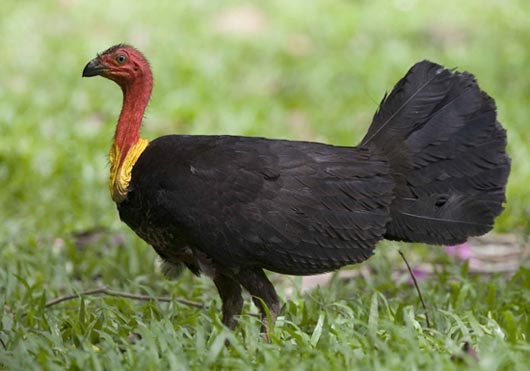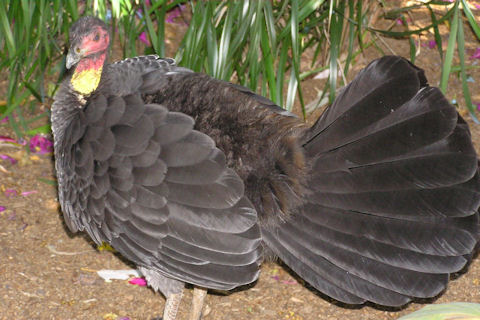Australian Brush Turkey Biography








The Australian Brush-turkey has a mainly black body plumage, bare red head, yellow throat wattle (pale blue in northern birds) and laterally flattened tail. The Australian Brush-turkey is not easily confused with any other Australian bird. It is the largest of Australia
The smaller (45 cm) Orange-footed Scrubfowl,Megapodius freycinet, which shares part of the Australian Brush-turkey's northern range, is entirely dark grey to brown, with the exception of bright orange legs and feet. Australia Australia
The Australian Brush-turkey's range extends along eastern Australia , from Cape York Peninsula , Queensland , south to the northern suburbs of Sydney and the Illawarra region of New South Wales
The Australian Brush-turkey inhabits rainforests and wet schlerophyll forests, but can also be found in drier scrubs. In the northern part of its range, the Australian Brush-turkey is most common at higher altitudes, but individuals move to the lowland areas in winter months. In the south, it is common in both mountain and lowland regions.
Brush-turkeys feed on insects, seeds and fallen fruits, which are exposed by raking the leaf litter or breaking open rotten logs with their large feet. The majority of food is obtained from the ground, with birds occasionally observed feeding on ripening fruits among tree branches.
As with other megapodes, the Australian Brush-turkey incubates its eggs in a large mound. The male usually builds a single large mound of organic matter, approximately 4 m in diameter and 1 m high. Some males have been recorded with more than one mound, but this is not common. Eggs are laid by several females in a single mound. The eggs are incubated by the heat given off by the rotting vegetation. The male maintains a constant temperature of 33 - 38°C by digging holes in the mound and inserting his bill to check the heat, then adding and removing vegetable matter as required. Before the eggs hatch, many fall prey to burrowing predators such as goannas. After hatching, the chicks burrow out of the mound, at which point they are left to fend for themselves. These hatchlings are fully feathered and are able to walk and fend for themselves immediately. Remarkably, they are able to fly just a few hours after hatching.
Australian Brush Turkey

Australian Brush Turkey

Australian Brush Turkey

Australian Brush Turkey

Australian Brush Turkey

Australian Brush Turkey

Australian Brush Turkey

Australian Brush Turkey

Australian Brush Turkey
Australian Brush Turkey / Scrub Turkey-With Nest
Australian Bush Turkey
No comments:
Post a Comment